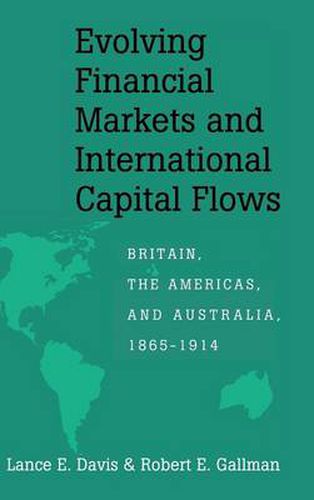Readings Newsletter
Become a Readings Member to make your shopping experience even easier.
Sign in or sign up for free!
You’re not far away from qualifying for FREE standard shipping within Australia
You’ve qualified for FREE standard shipping within Australia
The cart is loading…






This study examines the impact of British capital flows on the evolution of capital markets in four countries - Argentina, Australia, Canada, and the United States - over the years 1870 to 1914. In substantive chapters on each country it offers parallel histories of the evolution of their financial infrastructures - commercial banks, non-bank intermediaries, primary security markets, formal secondary security markets, and the institutions that provide the international financial links connecting the frontier country with the British capital market. At one level, the work constitutes a quantitative history of the development of the capital markets of five countries in the late nineteenth century. At a second level, it provides the basis for a useable taxonomy for the study of institutional invention and innovation. At a third, it suggests some lessons from the past about modern policy issues.
$9.00 standard shipping within Australia
FREE standard shipping within Australia for orders over $100.00
Express & International shipping calculated at checkout
This study examines the impact of British capital flows on the evolution of capital markets in four countries - Argentina, Australia, Canada, and the United States - over the years 1870 to 1914. In substantive chapters on each country it offers parallel histories of the evolution of their financial infrastructures - commercial banks, non-bank intermediaries, primary security markets, formal secondary security markets, and the institutions that provide the international financial links connecting the frontier country with the British capital market. At one level, the work constitutes a quantitative history of the development of the capital markets of five countries in the late nineteenth century. At a second level, it provides the basis for a useable taxonomy for the study of institutional invention and innovation. At a third, it suggests some lessons from the past about modern policy issues.